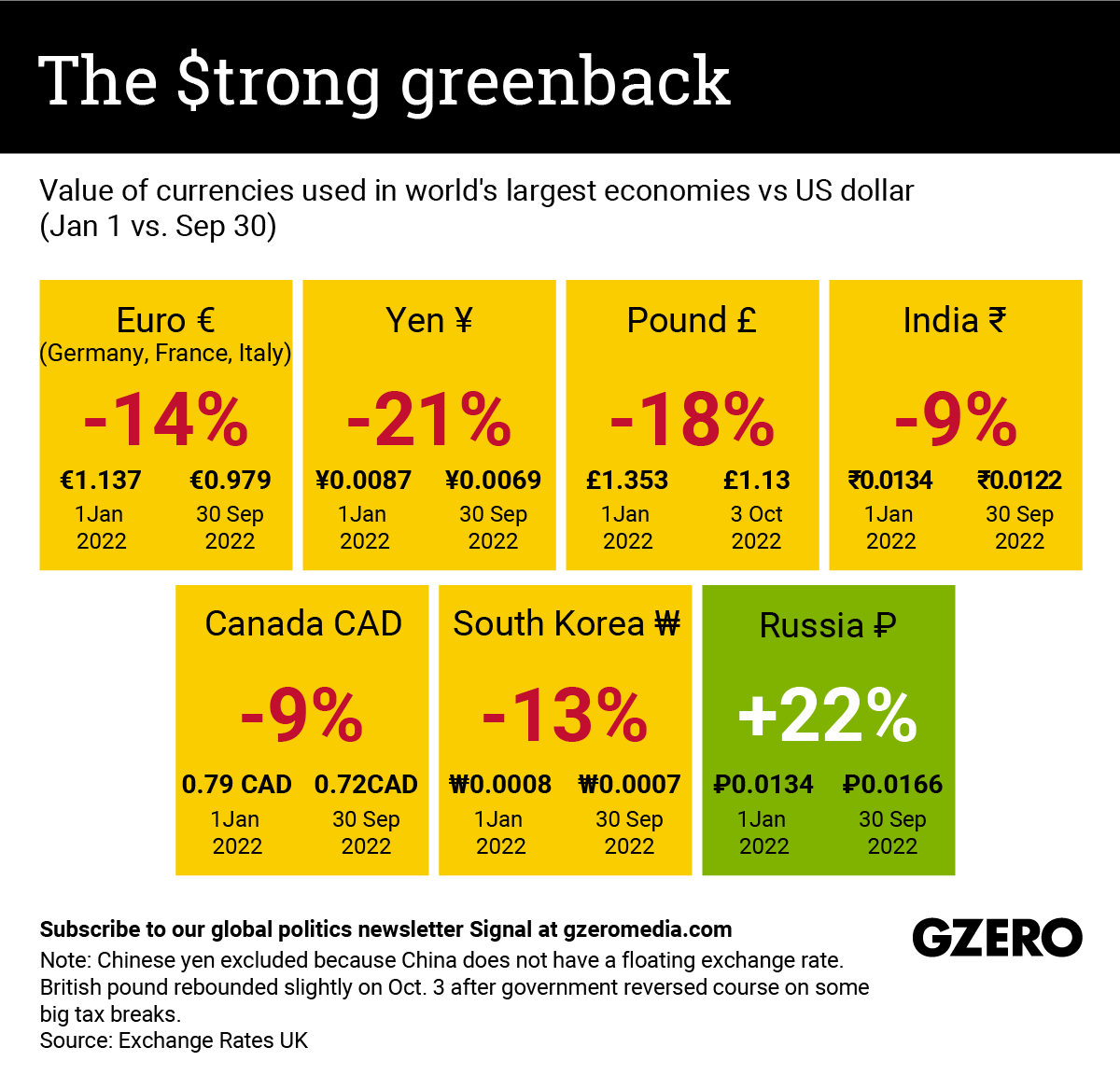Developed and emerging economies alike have seen the value of their currencies plummet in recent months due to the economic reverberations of the ongoing war in Ukraine. Food and fuel shortages have put upward pressure on prices, and inflation has soared to record highs in some places. While inflationary pressures are surely being felt in the US, the greenback has reached a two-decade high compared to other major currencies. This is in part because the US Federal Reserve’s measures to curb inflation have boosted investor confidence. However, a strong US dollar can have painful consequences for other states, particularly import-reliant ones, because most global commodities are priced in US dollars. We take a look at the value of currencies used in the world’s largest economies compared to the US dollar before and after Russia invaded Ukraine.
More from GZERO Media
Ian Bremmer breaks down why the latest Russia-Ukraine “peace push” is headed back to Moscow and why the outlook is bleak.
There are close presidential races, and then there’s the one in Honduras, where just 515 votes separate the top two candidates following Sunday’s election in the Central American nation.
What We’re Watching: Pushback on Venezuela strike, Tax protests in Bulgaria, China-Japan coastguard dispute
Even though an energy corruption scandal is roiling his leadership, Ukrainian President Volodymyr Zelensky isn’t necessarily in a rush to accept a deal to end the Russia-Ukraine war – especially if the terms are unfavorable.
Ian Bremmer breaks down President Trump’s ultimatum to Venezuelan leader Nicolás Maduro, “leave with your family or be removed,” and why US military action now appears imminent.
In this episode of Tools and Weapons, Microsoft Vice Chair and President Brad Smith sits down with Ed Policy, President and CEO of the Green Bay Packers, to discuss how purpose-driven leadership and innovation are shaping the future of one of the world’s most iconic sports franchises. Ed shares how technology and community-focused initiatives, from Titletown Tech to health and safety innovations on the field, are transforming not just the game of football, but the economy and culture of Green Bay itself. He explains how combining strategic vision with investment in local startups is keeping talent in the Midwest and creating opportunities that extend far beyond Lambeau Field.
Subscribe and find new episodes monthly, wherever you listen to podcasts.
Youth unemployment is making headlines from China to Canada, with many countries’ rates at historic highs. The fallout is fueling Gen Z discontent, creating migration pressures, and threatening social unrest in nations around the globe.
What We’re Watching: Trump orders shutdown of Venezuela airspace, Honduras election on a knife edge, Migrant skepticism spreads
Two military jets fly in formation during the industrial air show.
800: The death toll from the tropical storm that battered parts of Southeast Asia is now close to 800.
La crisis... en MÚSICA! 🎤🇻🇪 Trump, Maduro, Xi, y Putin nunca sonaron mejor // never sounded better! #puppetregime
